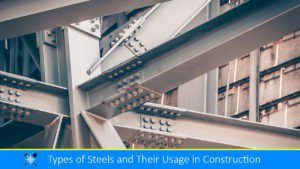What is Cement Mortar?
Cement mortar is a mixture of Portland cement, sand, and water in desired proportions to create a smooth and consistent mixture. The ratio of cement to sand varies depending on the application from 1:3 to 1:8, but a common ratio is 1:3, which means one part cement to three parts sand. In addition to sand, Pozzolana may also be added to prepare the mortar (Punmia. p214). Water is added to the mixture gradually until it achieves the desired consistency.
Mortar made with cement must be utilized within 30 minutes of adding water or within 1 hour of mixing. Cement-based mortars are typically better for creating high-strength mortars. It is one of the most widely used materials in the construction industry, particularly in masonry work, plastering and pointing works. Sealing the concrete pipe joints and preparing the bed of the manhole or inspection chamber.
Also, read: What is mortar?

Cement Mortar Against Nature of Works
Mortars that are made using Portland cement and blast furnace slag cement are highly effective for constructing walls with bricks, stones, and large blocks. In contrast, mortars made using Puzzolana Portland cement and sulphate-resisting cement are suitable for constructing buildings that are exposed to corrosive and wastewater. Furthermore, it can be utilized for plastering, rendering smooth finishes, and for damp-proof courses.
| Types of Work | Cement | Sand | |
|---|---|---|---|
| Masonry | 1 | 4-5 | |
| Plastering | Internal Plastering | 1 | 4 |
| External Plastering | 1 | 5-6 | |
| Pointing | 1 | 1-3 | |
| Reinforced Brick Work | 1 | 3 | |
| Foundation | 1 | 3-5 | |
From the above table, it is understood that, for brick masonry works or stone masonry works, the cement sand ratio is ideally selected as 1: 4 and 1: 5. There is no harm in applying cement mortar stronger than 1:4 for masonry works but it becomes uneconomical in large scale and it is not advised to apply weaker mortar than 1:5 for the same work.
Also, read: What is Lime Mortar?
Properties of Cement Mortar:
The following are the important properties of cement mortar:
- Adding water to a dry mix of cement and sand initiates the hydration of cement, which binds sand particles and surrounding surfaces of masonry and concrete.
- Mixes that are richer than 1:3 have a tendency to shrink.
- Mortar that is well-proportioned forms a surface that is impervious.
- Plastered surfaces made using leaner mixes cannot fill the voids in the sand, resulting in a porous surface.
- Table 2 illustrates the strengths achieved with various combinations of cement and sand, demonstrating that the strength of mortar is influenced by the ratio of cement and sand.
| Sl.No | Cement: Sand | Compressive Strength |
|---|---|---|
| 1. | 1:3 | 10N/mm2 |
| 2. | 1:4 | 7.5N/mm2 |
| 3. | 1:5 | 5.0N/mm2 |
| 4. | 1:6 | 3.0N/mm2 |
| 5. | 1:8 | 0.7N/mm2 |
Uses of Cement Mortar:
- It is used for securing/laying different types of masonry elements such as stones, bricks, and cement blocks together.
- It is also utilized in plastering slabs and walls to make them resistant to moisture.
- Additionally, it is used to create a smooth and polished finish on walls and concrete structures (beams, columns, slabs, etc).
- CM can be used for preparing beds for laying tiles.
- Another application of mortar is to fill gaps and crevices between masonry units.
- It is also used in the production of building blocks and as a filler material in Ferro cement works.
- Moreover, it can be utilized to fill in joints and cracks in walls as well as in stone masonry.
- Portland cement mortar may also be used to fill the gap between the eave tiles and the underlying part of the roof.
Also, read: Types of Plaster Finishes
FAQs:
Q. What is cement mortar?
Ans: Cement mortar is a mixture of Portland cement, sand, and water that is commonly used as a binding material in construction.
Q: What is the thickness of cement mortar for masonry works?
Ans: For the masonry works, the thickness of the cement mortar is recommended between 10 to 15 mm thick.
Q. What are the different types of cement mortar?
Ans: The most common types of cement mortar include cement-lime mortar (Gauged mortar), cement-sand mortar (cement mortar), and cement-lime-sand mortar. The type used depends on the specific application and the desired properties. However, cement-sand mortar is the most common type of mortar.
Q. What is the function of cement mortar?
Ans: The main function of CM is to bind together masonry units such as bricks, stones, or blocks. It is also used to create a smooth and polished finish on walls and concrete structures, fill gaps and crevices between masonry units, and as a filler material in Ferro cement works.
References:
- Bureau of Indian Standards. (1981). Code for Practice for Preparation and Use of Masonry Mortars (1st rev.) (IS 2250).
- Punmia. B.C (2006). A Textbook of Building Construction. Laxmi Publications (P) Ltd.
- Bhavikatti, S. S. (2010). Basic civil engineering. IK International Publishing House Pvt. Ltd.
- Mehta, M., Scarborough, W., & Armpriest, D. (2017). Building constructions: Principles, materials, and systems. Pearson Education, Inc.
![]()







